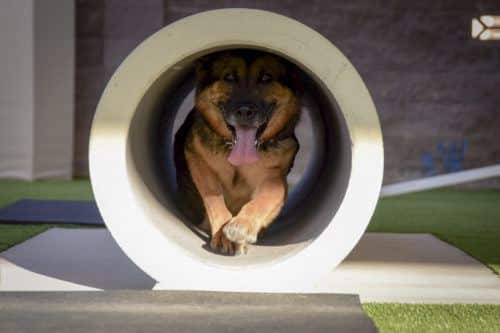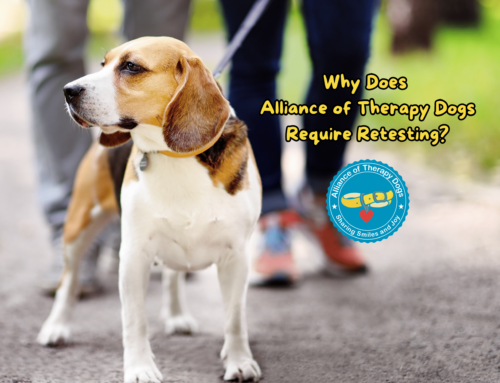Animals play a major role in the human experience. We interact with them in nature, eat them for food, and (best of all!) keep them as pets. We learn so much from animals, and most of us may not realize how much they actually help us. Not only are they a form of sustenance and nourishment for our bodies (sorry vegetarians!), but animals can help us psychologically and emotionally. It is not a new idea to have animals be a part of the mental healing process for human patients in therapy. What is rather new is the widespread acceptance and volunteerism that follows Animal Assisted Therapy (AAT) nowadays.
Animal-Assisted Therapy Began with the Ancient Greeks
AAT has roots that trace all the way back to the ancient Greeks. As history would have it, they were the first to use animals, specifically horses, to lift the spirits of the severely ill. Then, in the 1600s, physicians were reported to have been using horses to improve the physical and mental health of their patients. Farm animals were also used in the 1940s by the American Red Cross on a farm where veterans suffering from injury or illness could take care of the animals to further their recovery. It was said that working with the farm animals helped the veterans put their minds on something besides war and other associated traumas.
Animal-Assisted Used in Medieval Belguim
Pet animals were first used for therapeutic use in medieval Belgium. Interestingly enough, in this Belgian society, humans and animals were rehabilitated together. The animals were used for the humans’ therapy. It’s likely that interacting with humans provided the animals with a companionship that mirrored what they could offer. In reaction to practices such as this, animal therapy became a hot topic in academia. In the 1800s, Florence Nightingale observed that small pets reduced the levels of anxiety and stress in adult and youth psychiatric patients. This began a wave of informal experiments involving animal interaction with humans to produce a calming effect on patients suffering from anxiety. An Austrian Nobel laureate in Physiology and a psychologist were so intrigued by the connection between humans and animals that they developed an idea called the Human-Animal Bond. This theory described how humans need interaction with animals and nature to normalize the busyness of daily life. Dr. Sigmund Freud even used his pet pup in his practice. He believed his dog could tell the truest character in a human. The dog would remain close to patients who were free from tension and stress, and remain on the other side of the room from those who were not. Freud also used his dog to calm young patients with anxiety.
First Formal Research Into Animal-Assisted Therapy
During the 1960s, the first formal research involving animal therapy began. Dr. Boris Levinson found that his dog had a positive effect on mentally impaired young patients. Specifically, he discovered that these patients were more comfortable and likely to socialize with his dog than with other humans. It wasn’t until Freud’s findings were translated and published years after his death that Levinson’s findings were considered valid. This demonstrates the controversy surrounding the topic of formalized animal therapy and makes it even more impressive that today it is so extensive. The noticeable changes in human behavior when interacting with animals is the main reason why AAT has become such an integral part of today’s therapeutic practices.
It is probably apparent that pets have a positive effect on the mental health of humans. But can an animal therapy help you outside of clinical therapy? Studies show that owning a pet can help you live a longer, happier, and healthier life. Dogs, specifically, have been shown to reduce the risk of heart disease in their loving owners. For those who had suffered a heart attack, owning a dog or a cat decreased the risk of enduring another heart attack. Additionally, owners were alive for at least a year after the heart attack, regardless of the severity. So it would seem that animals know the way to our hearts. Pets are also especially helpful to the elderly, who may be struggling with feelings of depression and loneliness. Pets ease aggression presented by those with dementia and Alzheimer’s. They also provide the elderly with companionship and someone to take care of, reducing feelings of helplessness that is so common among the sick and the old. Furthermore, pets are great for teaching children responsibility and reducing a child’s risk of allergies and asthma. This is because having a pet around changes the microbiome of a person. It goes to show that even just owning a pet can cause significantly positive changes in your overall health and mental well-being.
Certification by the Alliance of Therapy Dogs
In 1989, the Delta Society, a group focused on animal education, invented a certification program to ensure the proficiency and success of animals providing AAT. More certifications have since popped up, but the basics remain those laid out by the Delta Society. Certifications for pets to train in AAT can be received through The Alliance of Therapy Dogs. After your pet passes the testing process, all you need to do is pay a low annual fee for membership. Then, you and your pet can begin to help those in need wherever you go. Given the tremendous results seen in patients since the beginning of unformalized AAT until now, you and your pet should join and become a part of history.






